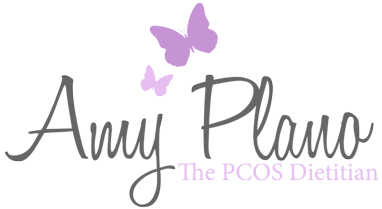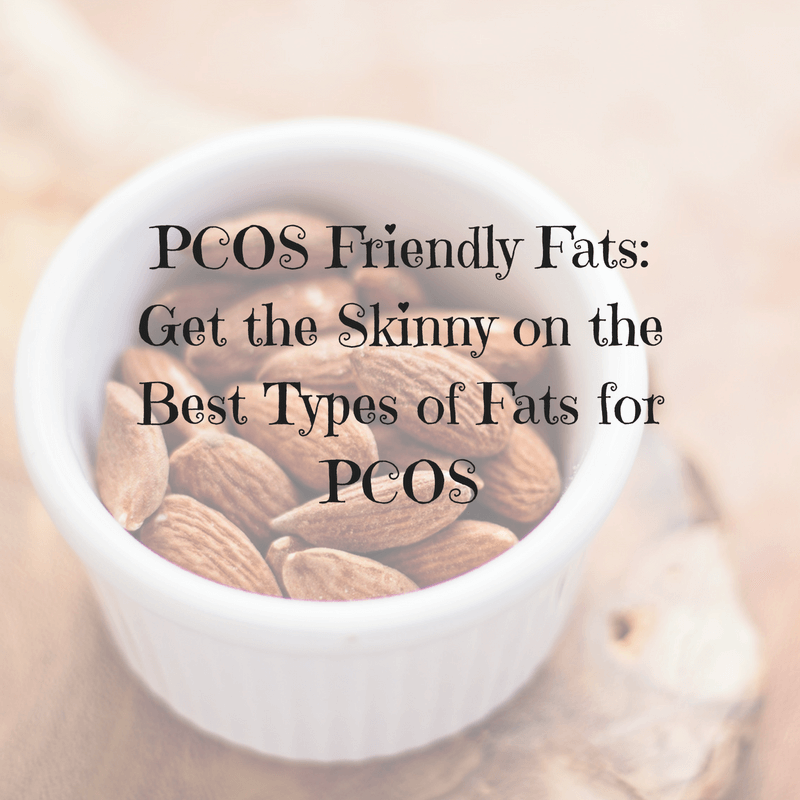
by AmyPlano | Oct 28, 2016 | General information about PCOS, PCOS and Fats, PCOS friendly recipes, PCOS snacks
PCOS Friendly Fats
Did you know that there was such a thing as PCOS friendly fats? Well, if you didn’t thank goodness you landed on my page! I am so happy to have YOU!
There is no denying that fat should be an integral part of any women’s diet. But this is especially true for the diets of women with PCOS. For these amazing women, eating fat (and the right type!) is actual critical to their overall health. There are SO many ways dietary fats are beneficial. Where the heck do I even begin!?!
Number one, they give your body with energy to support cell growth. They also help protect your organs and help keep your body warm. Fats also help your body absorb vitamins, mineral and important nutrients. They also form the backbone of your sex hormones. This last part is especially important, as we know PCOS is a disorder marked by imbalances in hormones. If women don’t take in enough fat then they don’t have the natural resources to correct these imbalances.
Not to mention – fats made us feel FULL! And who does not want to feel full? Fats are such an important part of our diet – yet many women with PCOS tend to shy away from them. And the plot thickens ….

Did you know that women with PCOS are twice as likely to suffer from atherosclerosis than women without syndrome? Yup. This is because many women with PCOS, by nature of the disorder, have several inherent risk factors for heart disease. Many women with PCOS present with central adiposity (excess weight in the belly area), high blood pressure, high triglycerides and low ‘good’ cholesterol levels. All of these risks significantly raise their risk heart disease and stroke.
SO I know what you are probably thinking …

Believe me on this one, cysta!
The simple answer – “Absolutely!” But fret not, the PCOS dietitian is here to give you the skinny on the best types of fats to include in your diet. But I will warn you – the explanation is anything but simple. You see, it critical to note that not all fats are created equal. Some are better for us than others. But even saying that is oversimplifying fats. The quality of fats are dictated by where they come from, how they are processed, raised or prepared as well as additives or preservatives it may contain. All these variables come into play when we considering whether a fat “good” for us or not. In future blogs we tackle the types of fats you should avoid – but onward to the good stuff!
PCOS Friendly Fats
Monounsaturated fats (MUFAs)
Let me count the ways I love monounsaturated fats (MUFAs)! MUFA’s can have a beneficial effect on your heart by optimizing your cholesterol levels. One of the ways that MUFAs do this is that they help lower the “bad” types of cholesterol (LDL) in the blood and while increasing the “good” (HDL) kind.
Tip: When trying to figure out the two cholesterol levels remember it this way: LDL is your lousy cholesterol and you want this level LOW, while HDL is the healthy cholesterol and you want these levels HIGH.
By optimizing these two values you can lower your risk of heart disease and stroke. Furthermore, research supports that MUFAs may also benefit insulin levels and blood sugar control, which can be especially helpful for women with PCOS. Trifecta! Talk about being a PCOS friendly fat! Monounsaturated fats also offer nutrients to help with cell development and provide a good source of vitamin E in the diet. Where can you get your hands on these lovelys? The PCOS Dietitian would not leave you hanging!
Examples of Monounsaturated fats
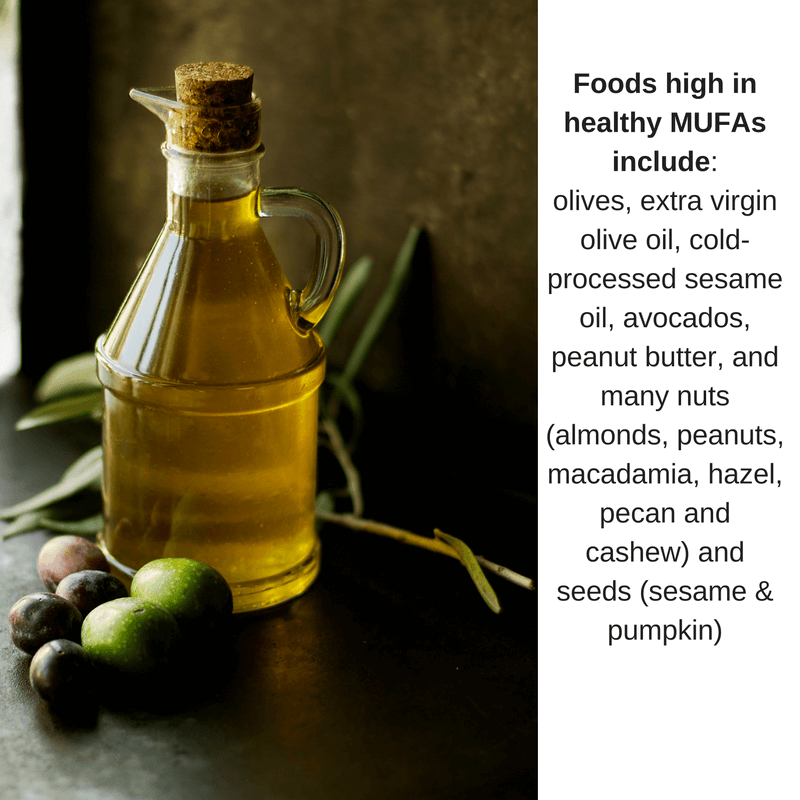
Foods high in healthy MUFAs include: olives, extra virgin olive oil, cold-processed sesame oil, avocados, peanut butter, and many nuts (almonds, peanuts, macadamia, hazel, pecan and cashew) and seeds (sesame & pumpkin)
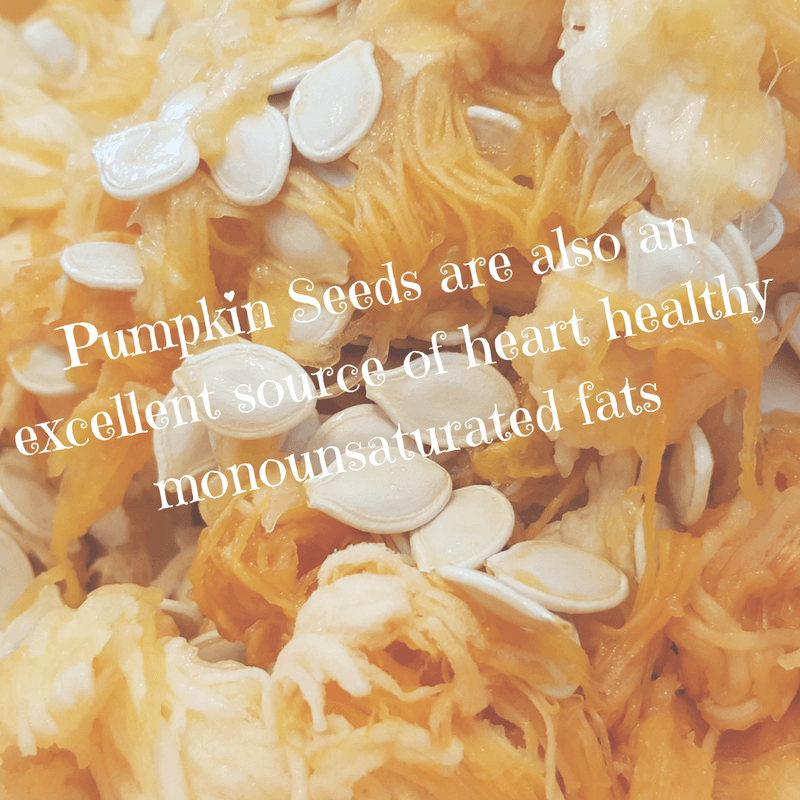
But when speaking of the good – there is always an exception to the rule – Refined Monounsaturated Fats
Canola oil, peanut oil and safflower oil are also monounsaturated fats. However, they are what I would consider modern refined processed oils. The majority of these crops are grown from genetically modified seeds. The oils are treated with high heat and toxic solvents. The processing increases the shelf life of the oils and removes most of the natural flavoring, making them more attractive for the industrial food industry. Please limit your intake of these types of oils as much as possible.
Buying tip: Most olive oils are actually blends of several oils including vegetable oils. Therefore, when buying olive oil look for the California Olive Oil Council (COOC) logo. For Italian olive oils look for (DOP), Spanish (DO) and ones from France (AOC) to make sure it is authentic.
How Much Do You Need of Monounsaturated Fats?
No need to go krazy! All fats, including monounsaturated fats, are high in calories, so use MUFAs only relative to your personalized daily fat requirements. Consume MUFA-rich foods instead of other fatty foods, NOT in addition to them! The goal for your overall fat intake should be around 25-35 % of your total calories. Monounsaturated and polyunsaturated should make up the bulk of this.
Polyunsaturated fats (PUFAs)
Well, I have to say, I have just as much love for PUFAs as I do for MUFAs. When you pour your favorite cooking oil into a pan, there’s a good chance you’re using a polyunsaturated fat. Polyunsaturated fats are used to build cell membranes and line the covering of nerves. They are needed for blood clotting, muscle movement, and for controlling inflammation. Studies support that eating polyunsaturated fats in place of saturated fats or highly refined carbohydrates reduces harmful LDL cholesterol and has a positive effect on the cholesterol profile. They can also help lower triglycerides.
Examples of Polyunsaturated fats
Examples of foods high in polyunsaturated fats include: walnuts, sunflower seeds, organic tofu, soybeans, and fatty fish such as salmon, mackerel, herring, and trout.

Note – just like the monounsaturated oils – canola, safflower and peanut oil – soybean oil, corn oil, sunflower oil also fall under the same ill as those modernized processed oils. They too are highly processed oils that go through an insane amount of processing with chemical solvents, steamers, neutralizers, de-waxers, bleach and deodorizers before they end up in the bottle. So please, when possible reduce their use in your cooking and limit your general consumption of foods that contain them.
Omega 3 Fatty Acids – Superstars
But on a much more positive note, I bet you have heard of the superstar Omega 3 fatty acids! Omega 3 fatty acids are essential fats the body cannot produce. Therefore, we need to consume these guys in the diet.
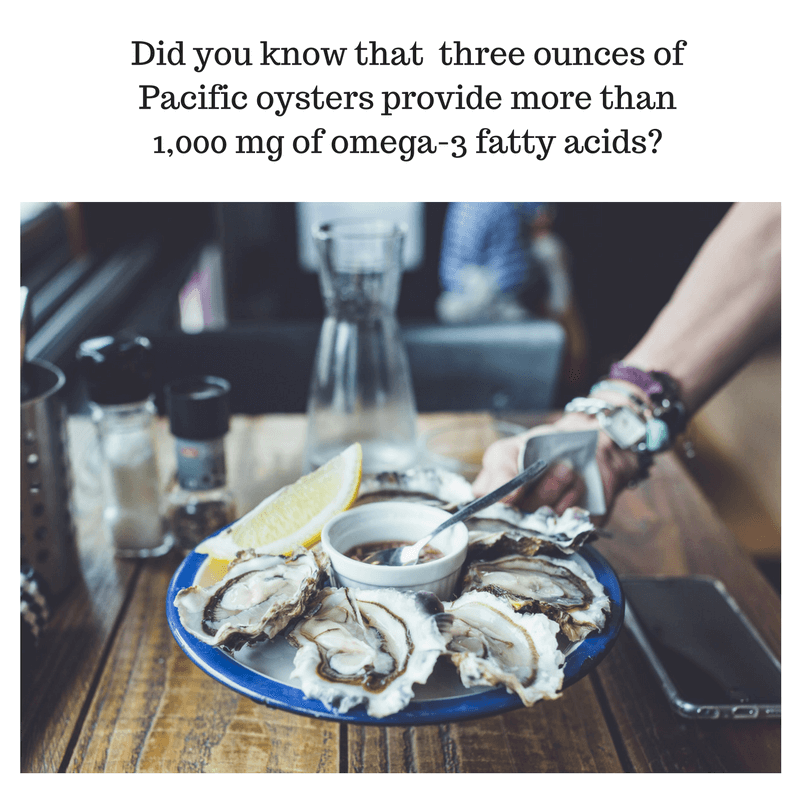
Did you know that there are three different types of omega 3 fatty acids? The three types are DHA, EPA & AHA. DHA and EPA are the preferrable form and are found in foods like cold-water fish and algae. While ALA is found more in plant foods such as nuts and seeds, as well as in grass-fed beef.
The Benefits of Omega 3 Fatty Acids
The benefits of omega 3 fatty acids are seemingly endless! When consumed in right amounts they are known to help with everything from promoting a healthy pregnancy, to decreasing the risks for depression, dementia and even memory loss. Inflammation in the body can damage your blood vessels and lead to heart disease and stroke. Omega-3 fatty acids may decrease triglycerides, lower blood pressure slightly, reduce blood clotting, decrease stroke and heart failure risk and reduce irregular heartbeats. Not too shabby, right?
Examples of Foods Containing Omega 3 Fatty Acids
Foods that are high in omega 3’s include salmon (wild caught & sockeye), herring, mackerel, anchovies, oysters, sardines, pole & line caught tuna and lake trout. Vegetarian sources include algae (seaweed) walnuts and flax.
Buying tip: Polyunsaturated fats are much more vulnerable than monounsaturated fats. PUFAs are sensitive to light, air and sunlight. Therefore, keep foods high in PUFA’s away from direct light and when permissive keep in the refrigerator to prevent them from going rancid.
How Much Do You Need of Polyunsaturated Fats?
As important as PUFAs are there is no set requirement. However, the American Heart Association recommends eating at least 6 ounces of cold-water fish twice per week. If you do not like fish or feel like you are falling short on your intake, you may want to talk to your physician about a supplement. It’s especially important to consult your health care provider if you are pregnant or breastfeeding, if you take medicine that affects blood clotting, if you are allergic to seafood, or if you are considering giving a child an omega-3 supplement.
Still stumped on how to get more PCOS friendly fats in your diet? Let the PCOS Dietitian give you some fun and fresh ideas.
Five Ways to Incorporate More PCOS Friendly Fats Into Your Diet
1. Go nuts!
Snack on nuts instead of salty, carb-laden pretzels and chips. Nuts are a great source of heart healthy fats, super tasty and even come in single serving bags. Just make sure to keep your serving to around ¼ cup which equals around 180 calories, 14 grams of fat (almost all mono & polyunsaturated!), 6 grams of protein and 6 grams of carbohydrates.
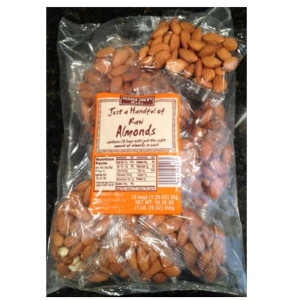
Tip: Trader Joes sells pre-portioned almonds and cashews called ‘Just a Handful of Almonds.” If you are looking for something with a bit more spice and kick the Emerald brand sells 100-calorie packs of flavored cashews, almonds and walnuts. The flavors range from Siracha, to jalapeño to chocolate and cinnamon. These are great to throw in your car, desk drawer or car. They travel extremely well.
2. Become Sandwich Savvy
Replace your cheese and/or mayonnaise on your sandwich with sliced avocado or even guacamole. This quick little swap decreases your intake of unhealthy fats while boosting your intake of monounsaturated fats. It also adds a whole new dimension to your ho-hum lunch!
Tip: It seems like it always so hard to get avocados ‘just right.’ They always seem to be too hard or too ripe. Just a quick tip if they are green and unripe is to put them in a brown bag (just like you would other fruits!) and that will speed the ripening process. On the flip side, if you have an avocado on the counter that looks perfect – but you are not ready to use it – throw it in the fridge. This will halt the ripening process.
3. Nut Butters
Nut butters – need I say more?!? I sometimes wish nut butters were a food group. If they were I would be SO in love!

Nowadays you can get almost every nut in spreadable form. Gone are the days when you could just get peanut butter. Now you can get cashew, almond, and hazelnut butters and my personal favorite – sunflower seed butter! Spread any of these heart healthy butters on celery, apples, bananas or even swirl into your morning oatmeal. But just like any fat be mindful that each tablespoon of nut butter packs a whopping 100 calories and 6 grams of fat. Yes, it is healthy fat – but next thing you know that “little” bit of peanut turned into half the jar. Sounds familiar?
Tip: When buying peanut butter always go organic! The crops are heavily sprayed and no one needs all those chemicals in their body. Also brands such a Skippy & Jiff (unless they state they are “natural”) contain hydrogenated fats – so don’t touch those bad boys with a ten-foot pole.
4. Cha-Cha-Cha-Chia
Discover the magic of chia seeds. Chia seeds are loaded with fiber, calcium, antioxidants and Omega 3’s. They are a true super food. You can pretty much buy them in any grocery store including the obvious ones like Trader Joes and Whole Foods. A small bag goes for around $6 – $8 depending upon the brand. A small bag supplies well over 40 servings!
You can sprinkle on your yogurt, blend into your smoothies or make some killer chia pudding! See my recipe below for this tasty treat.
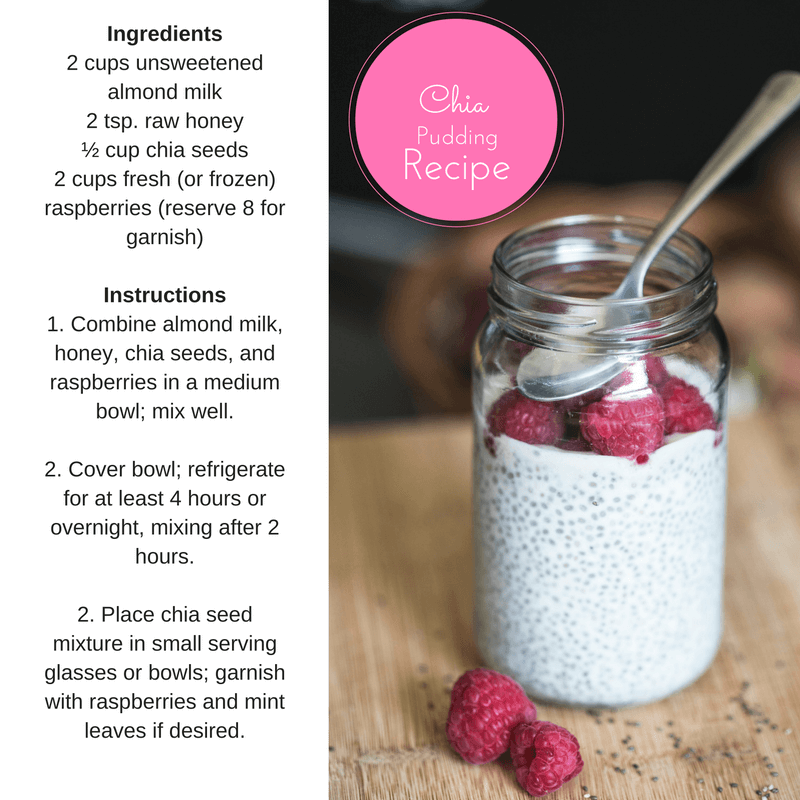
Tip: Remember what we said about polyunsaturated fats like Omega 3’s? They are vulnerable to oxidation. Storing them in the refrigerator will extend their shelf life. However, most chia seeds come in special vacuum-sealed packaging. These packages can be stored at room temperature until they are opened. Once opened, throw the whole bag in the fridge to maintain their freshness.
5. Make your own salad dressings
Making your own salad dressing is SO easy! Once you start doing this – you will be ashamed you ever bought the crap in a bottle. Plus, it a terrific way to get your PCOS friendly fats in AND your greens.
I urge you experiment with different types of oils when making your dressings. Have you tried avocado oil? It is a super mild oil that blends nicely with various vinegars, acids such as lemon and lime. How about walnut oil? It pairs awesome with balsamic and maple syrup. Check out the recipes below. You can always tweak the ingredients to suit your palate!
Avocado Vinaigrette
Ingredients:
3 tablespoon Avocado Oil
1 tablespoon Apple Cider Vinegar
1/2 clove Garlic, grated or crushed
Zest of 1/2 Lemon
1/4 teaspoon salt
1/4 teaspoon back pepper
For the Vinaigrette:
Whisk all ingredients in a small bowl. Top off your favorite bowl of salad greens!
Lighten-Up Lemon Walnut Salad Dressing
Ingredients:
1/4 cup red wine vinegar
2 tablespoons minced shallots (onions will work, too!)
2 tablespoons walnut oil
1 tablespoons REAL maple syrup (you can adjust up or down depending upon how sweet you like it!)
1 tablespoon fresh lemon juice
1/2 teaspoon salt
1/4 teaspoon freshly ground black pepper
Preparation
Combine all ingredients, stirring with a whisk. Store in refrigerator for up to 1 week. A mason jar is a great storage vehicle.
Phew that was a lot of info! Hopefully I have convinced you of all the awesome benefits of including PCOS friendly fats in your diet. Rather than shy away from, you know have the important tools to make the most educated decisions when it comes to which fats to choose to support your PCOS. But as always I would love to hear your thoughts. What are some of your favorite MUFAs and PUFAs? What are your strategies for fitting them in your diet? Tell us in the comments below!


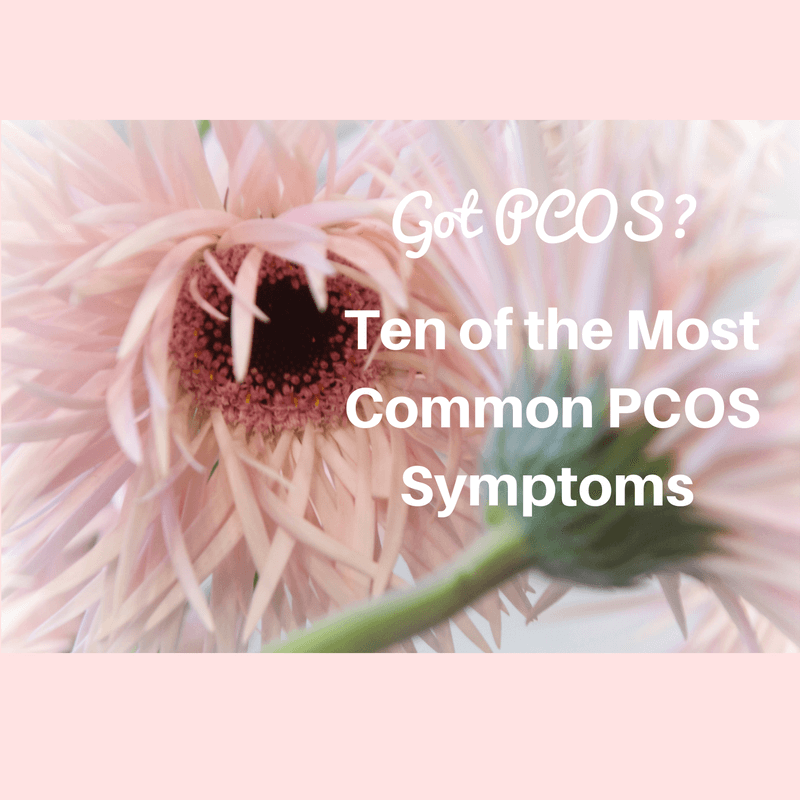
by AmyPlano | Oct 10, 2016 | General information about PCOS
Got PCOS? Ten of the Most Common PCOS Symptoms: What to Watch Out For
Being able to identifythe common PCOS symptoms is SO very critical for receiving an effective diagnosis. Without a proper diagnosis, a women with PCOS cannot receive the proper medical treatment. Yet, so many women experience a myriad of PCOS symptoms but never report them to their medical providers. Did you know PCOS is the most prevalent hormone imbalance in women under the age of 50? Yet nearly 70% of all cases are undiagnosed. The statistics are astounding! Furthermore, one out every fifteen women worldwide struggles with PCOS. This is especially relevant because if left untreated, PCOS can lead to more far reaching health concerns, such as diabetes, heart disease and endometrial cancer.
Most women with PCOS primary health issues stem from an overabundance of androgens (male hormones) and insulin resistance. Classic PCOS symptoms include: infertility, irregular menstrual cycles, excessive hair growth and elevated weight. Even though the name of the syndrome is Polycystic Ovarian Syndrome – it is possible to have PCOS WITHOUT having cysts in your ovaries. So don’t freak out if you don’t have ovarian cysts and are still diagnosed with the syndrome.
Symptoms of PCOS may begin shortly after puberty. Some of the signs and symptoms can be attributed to other causes or go unnoticed, which makes diagnosing PCOS difficult. Below are some of the most common symptoms of PCOS. Please be mindful that this list is by no means all-inclusive. Due to the fact that PCOS is disorder of hormonal imbalance – symptoms vary tremendously from women to women.
Ten of the Most Common PCOS Symptoms
1. Irregular periods. This is the most common characteristic of PCOS. This can include having irregular menstrual intervals or having prolonged menses that are either scant or super heavy.
2. Excess androgen levels. Elevated levels of male hormones called androgens is a classic symptom of PCOS and can lead to problems with weight, excessive hair growth, acne, and baldness.
3. Polycystic ovaries. Women with PCOS may or may not have cysts on their ovaries. The cysts associated with PCOS are actually eggs that do not get released from the ovary because of abnormal hormone levels.
4. Issues with weight gain. About half of women with PCOS struggle with weight gain and obesity. Many women have difficulty losing weight despite making dietary changes.
5. Unwanted hair growth. Women with PCOS may experience excessive hair growth on their face, arms, back, chest, thumbs, toes, and abdomen as a result of hormonal changes.
6. Acne. Hormonal changes can also lead to issues with acne or other skin issues such as skin tags or darkened patches of skin.
7. Fatigue and sleep problems. Many women with PCOS have lower energy levels and issues with poor sleep.
8. Thinning hair on head. This symptom may be more noticeable during middle age.
9. Infertility. PCOS is one of the leading causes of infertility.
10. Headaches and mood changes. Hormonal changes can prompt headaches and increase the likelihood of mood swings, depression, and anxiety.
Take Action!
In concPlease, please, please promise me if you have any of these symptoms that you will be super proactive with your health! You are important girl friend and deserve the proper treatment. Many women who experience the symptoms of PCOS suffer silently. They are often too embarrassed, or feel the symptoms could be perceived as an awkward phase of sexual development, reactions to stress or poor lifestyle choices, or even false concerns with a less-than-perfect body. Therefore, rather than speak up and express their concern they chock them up to “female problems.” And as a result, are unable to get the appropriate diagnosis and treatment plan.
Yes, they are female problems – but they are important female problems that need your direct attention and those who help keep you healthy (doctors!) Under no circumstances should you have to suffer. If your regular OBGYN will not listen and address your concerns – then seek someone out who will. Monitor and document any changes to your appearance (especially your skin and hair), as well as any unexplained weight gain and menstrual irregularity. Collect data and never ever give up.
I have seen far too many women struggle for far too long in my practice. It absolutely blows my mind when patients come to see me and have a myriad of undeniable PCOS-related symptoms and NOT ONE of their doctors has done one thing aside from tell them to “exercise more and lose weight”. If only it was that easy! Geez!

Having PCOS should not define you, but a proper diagnosis is necessary to define your treatment plan.
In conclusion, you need to be proactive with your health and report all the symptoms of PCOS you may be experiencing. I do my best to keep you informed about what you should be doing from a dietary standpoint – but sometimes that just not enough. You need to be heard and something needs to be done to help you with these symptoms. And please remember … it is not you – it is your body!
Do these symptoms sound familiar? Have you or someone you know been suffering with these symptoms and no one in the medical field seems willing to listen, understand and help do something about them? Please share your frustrating experiences with the medical community in the comments below. I think so many women can benefit from hearing your story! Now is the time to vent. We are listening and have your back.


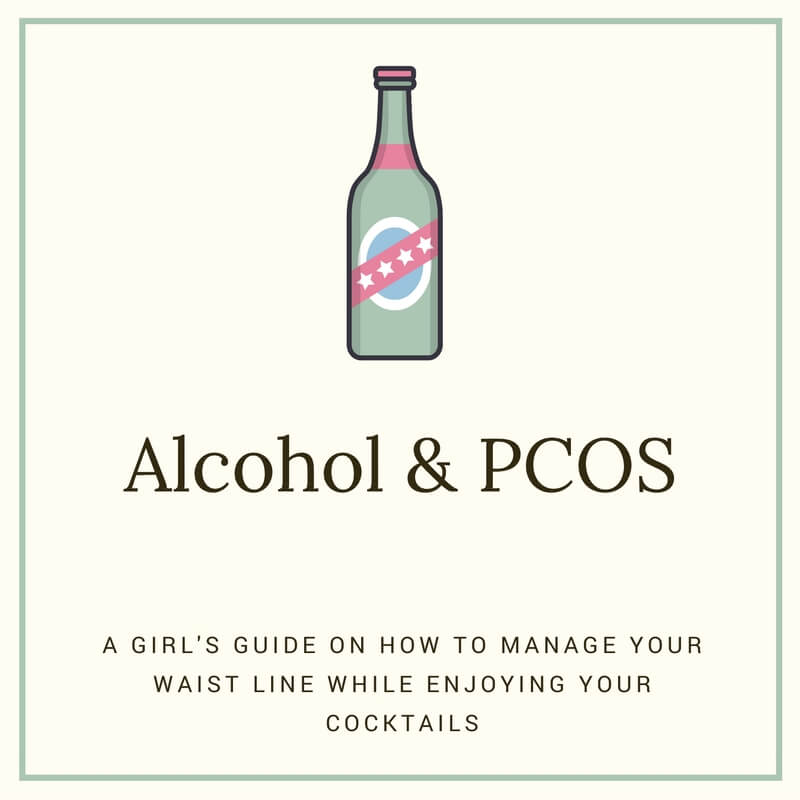
by AmyPlano | Sep 27, 2016 | PCOS and alcohol, PCOS and College
Alcohol and PCOS
It’s Saturday night and your friends ask you to go out for a cocktail. But, you can’t stop thinking…how the heck does alcohol and work with my PCOS? What drinks should I stay away from? Are there things I CAN drink that might be better for my PCOS? Or do I just need to sit there like a lump-on-a-log having no fun at all? Fret not cysta’, I have all your answers and then some in my latest blog post on alcohol and PCOS.
While I am certainly not encouraging you to party those cute little pants off, I want you to understand that having PCOS does not mean you have to give up the occasional drink. Here are a few simple tips for drinking alcohol without completely derailing your PCOS weight loss plan.
Eat before
Don’t drink on an empty stomach! Alcohol is absorbed much more rapidly when your stomach is empty. This means you will feel the effects of alcohol faster. Do yourself a favor and eat something with a modest amount of fat and protein before heading out to the bars. The protein and fat are digested slowly and act as a buffer for the alcohol.
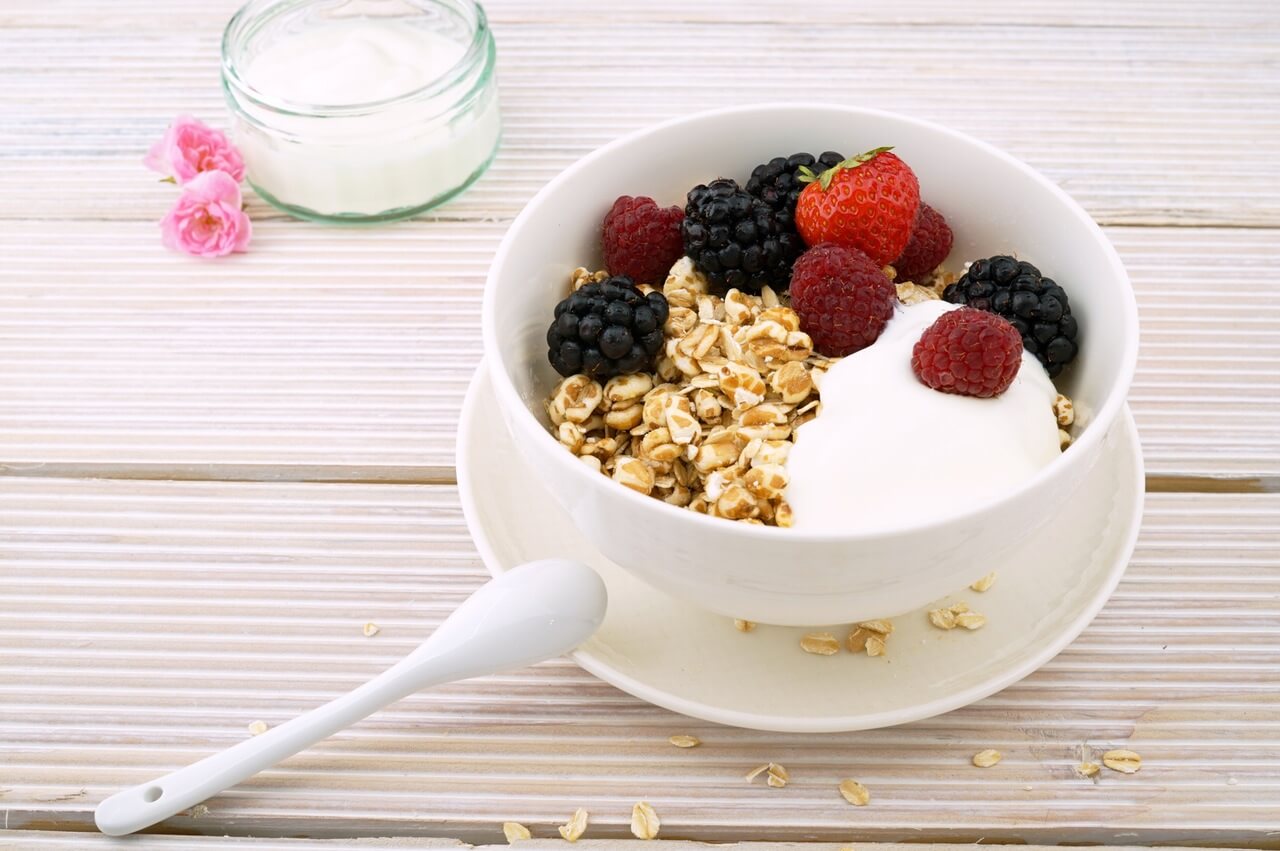
Combine a container of 2 % Greek Plain yogurt with 1/2 cup of berries and a sprinkling of granola and you have yourself an awesome “pre-game” snack!
Good choices include a container of 2 % Greek yogurt with 1/2 cup of fruit and a tablespoon of granola. a serving of whole-wheat crackers and low-fat cheese or some yummy guacamole and raw veggies.
Squash temptations
Also by consuming a meal or snack before heading out, you may be more likely to stay away from the greasy, carby bar food that may be calling your name. We all know alcohol lowers our inhibitions. Almost as soon as alcohol enters the blood stream it can hijack lower one’s personal inhibitions. Yeah, it will make a person feel more relaxed and outgoing — but it also drops our inhibitions and prompts us eat many things we would not ordinarily eat if we were sober. Did somebody say nachos? pizza? Chinese food? How we LOVE you so after a couple of cocktails! ♥♥♥ But, if we are full and satisfied by our meal, we will not even want those tempting foods.
Be mindful of your meds
If you have PCOS there is a good chance you are on Metformin. Metformin and alcohol don’t mix well at all. This is especially the case if you often drink a lot of alcohol or you binge drink (drink a lot in short periods). These effects include an extremely low blood sugar level, called hypoglycemia, and a condition called lactic acidosis.
While lactic acidosis is rare, it can be serious. It’s caused by a buildup of lactic acid in your blood. When you take metformin, your body produces more lactic acid than it usually does. When you drink alcohol, your body can’t get rid of lactic acid as quickly. Drinking too much alcohol, especially with metformin, can cause a buildup of lactic acid. This buildup can cause serious damage to your kidneys, lungs, heart, and blood vessels.

Be very mindful of the harmful effects of combining metformin & alcohol
Symptoms of lactic acidosis include:
♦ weakness
♦ tiredness
♦ dizziness
♦ light-headedness
♦ unusual muscle pain, such as sudden and severe pain in muscles that don’t usually cramp
♦ trouble breathing
♦ stomach discomfort, such as a fluttering feeling, nausea, cramping, or sharp pains
♦ feeling cold
Therefore, if you anticipate a big night of drinking hold off on taking your metformin for at least 48 hours. Lactic acidosis is a serious emergency and not something to mess around with. If you take metformin and have been drinking and you notice these symptoms, call your doctor right away or go to the nearest hospital’s emergency room.
Set a limit and stick to it
Alcoholic beverages contain a significant amount of calories with minimal nutritional value. Having one or two drinks won’t ruin your weight loss attempts but consuming any more on a regular basis can. Therefore, prior to going out, come up with a ‘game plan.’

Make sure to establish a drink limit before you even set foot out of the house. Stick to your guns and you will ‘thank yourself’ the next morning
Decide on how many drinks you are going to have AND what they will be. Share your plan with one of your friends who will be out with and have them hold you accountable.
Make better choices
Stay away from the specialty cocktails or blended drinks. While these look delicious, most are very high in calories and sugar. Some specialty drinks contain over 500 calories and 50 + grams of carbohydrates PER DRINK. Whoa Mama!
Instead make better choices. Choose a light beer, glass of wine, or hard alcohol (gin/vodka/rum/tequila) on the rocks, with diet soda, or soda water and lime to save on calories and carbohydrates. All hard alcohol has no carbohydrates. It is the mixers (juices, syrups, regular soda) that contain all the carbohydrates. If you need more flavor than using the soda water and lime, ask for just a splash of juice and you will still significantly save on calories and carbohydrates.

Frozen drinks pack a serious carb punch – coming in at around 65 grams of carbohydrates – pina coladas are one of the worst choices when it comes to alcohol and women with PCOS.
Just because it is a clear liquid – don’t let the tonic water fool you. Tonic water has the same amount of calories and carbohydrates as regular soda. Boo! You’re better off sticking to soda water or diet soda.
So now that you know what you cannot drink – let’s get down to business with what you CAN drink!
PCOS Friendly Cocktails
I bet you did not even think there was such a thing! Well, girl friend the PCOS dietitian would not leave you hanging, right?
Low-Carb Mojito
The traditional mojito uses simple syrup for sweetening, but if you use a diet lemon-lime soda like Diet Sierra Mist or Diet Sprite, you can get all of the sweetness without all the carbs.
Make it! Mix one shot (1.5 ounces) of rum with fresh lime juice and diet lemon lime soda. Pour over to muddled mint leaves with crushed ice.
Estimated calories: 110
Estimated carbohydrates: 1.5 grams
Carb-Free Gin & Tonic
Oh I know we are already into Fall – but cannot we savor our summertime favorite — the gin and tonics just a little while longer? They’re crisp and cool, but like I mentioned above tonic water is loaded with carbs, with 21 grams per cup! Swap out regular club soda or flavored seltzer for your tonic, and you’ll get the flavor without hurting your waist line.
Make it! Mix one shot (1.5 ounces) of gin with club soda water or seltzer water, a squeeze of lemon or lime. Serve over ice.
Estimated calories: 150
Estimated carbohydrates: <1 gram
Diet Jack & Coke
Obviously, a regular cola would destroy your skimpy daily carbohydrate allowance. But diet soda lends itself to many carb-free cocktails. This spin on the traditional Jack & Coke simply uses Diet Coke instead.
Make it! Mix one shot (1.5 ounces) of whiskey with Diet Coke. Serve over ice.
Estimated calories: 100
Estimated carbohydrates: 0 grams
Cuba Libre
Not to beat a dead horse, but it is no surprise when you are watching your carbs, you can make any simple favorite low-carb friendly using diet-soda. Despite its sweet flavor, rum contains zero carbs!
Make it! Mix your favorite unflavored rum with diet coke and serve over ice. For an added twist, throw in a piece of lime.
Estimated calories: 100
Estimated carbohydrates (with a twist of lime): <1 gram
Low-Carb Sea Breeze
A Sea Breeze is a fruity, girly drink, but it doesn’t have to be loaded with sugar. Traditionally, it’s made with grapefruit juice, but using Diet Squirt or Fresca instead eliminates the extra carbs.
Make it! Mix one shot (1.5 ounces) of vodka with 2 ounces of unsweetened cranberry juice and 4 ounces of Diet Squirt or Fresca. Pour over ice.
Estimated calories: 110
Estimated carbohydrates: 6 grams
Wine
If you like your wine cold and refreshing, Pinot Grigio is a good option without too many carbohydrates. There are about 123 calories and 3 grams of carbs in 5 ounces.
Sauvignon Blanc also earns a place on your low-carb wine list clocking in at about 120 calories and three grams of carbohydrate per 5 ounce glass.
If red wine is more your style, Pinot Noir is another fantastic lower-carb option. There are about 122 calories and 3.4 grams of carbohydrate per 5 ounce glass.
Beers
Michelob Ultra
It is no surprise that beer doesn’t typically make it on low-carb lists. Most are loaded with calories and carbohydrates. Some light beers, however, are PCOS friendly. Michelob Ultra tops the list as your lowest carb beer option. On one 12-oz bottle there are 95 calories and 2.6 grams of carbohydrate.
Beck’s Premier Light
If you need a little more flavor with your bubbles, Beck’s light beer might do the trick! It’s another certainly is a lower-carb options. For one 12-oz bottle you will be guzzling down only 63 calories and 3.8 grams of carbohydrates.
Watching your carb intake doesn’t have to be torture! If you want to enjoy a drink now and then, choosing the right ones will make sure you don’t upset your PCOS related goals.
Now, take this advice and go enjoy that drink with your friends! Alcohol can fit into a PCOS friendly diet with moderation and making smarter choices, which you my friend are now a pro at.


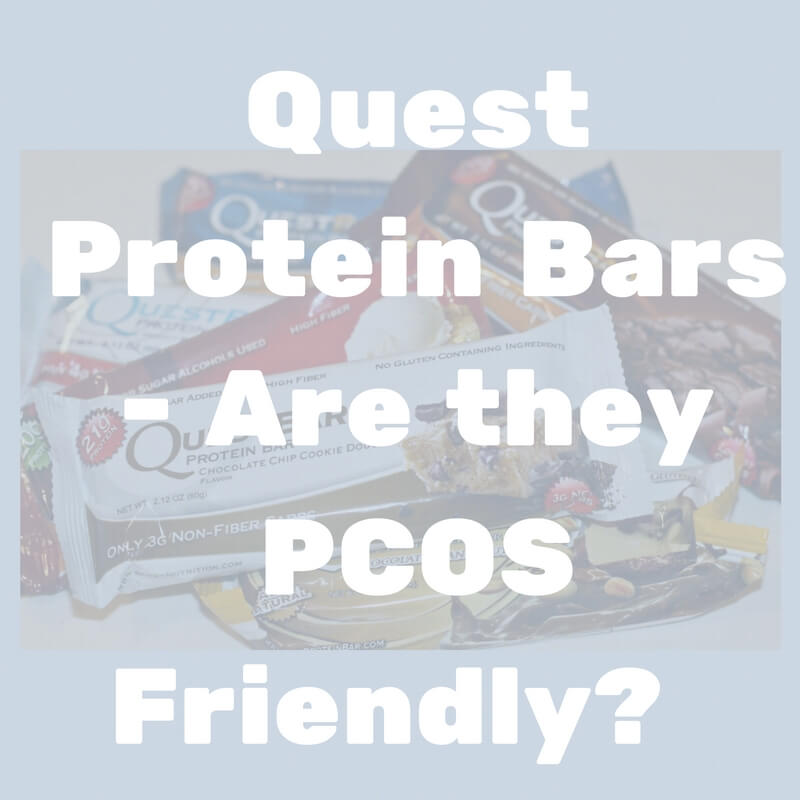
by AmyPlano | Sep 8, 2016 | PCOS Breakfast Foods, PCOS snacks
Choosing a protein bar that is PCOS friendly can be tricky! With such a variety of choices it is no surprise you are overwhelmed. Question – do you even know what you should be looking for when shopping for protein bars? Should you look for bars that are low in fat? Low carb? Low sugar? High fiber? It seems like the list of variables are endless! But don’t worry the PCOS Dietitian has your back 🙂
To help you make the best decision for your PCOS, I have decided to write a an educational series of blogs on several of the popular protein bars on the market. It is my goal to discuss the different bars and explain whether I would give them the PCOS stamp of approval. Please be mindful there are SO many reasons why someone might choose a particular protein bar. However, I am going to do my best to break down the protein bars down into four specific criteria: nutritional profile, ingredients, cost and taste. Each week I will review a different bar and base my review on the same criteria. That way you can make your own comparisons and select the best protein bar based on the information presented. So now let’s go assess our first bar: Quest Bars.
Quest Protein Bars
Are they PCOS Friendly ???
I decided to start by reviewing one of the most popular protein bars on the market: Quest Bars. For about the last three years, Quest Bars have claimed their fair share of the protein bar market. Touted nutritionally for their high protein, moderate carbohydrate, high fiber make-up Quest Bars are without a doubt a popular choice among protein bars. But how do they stack up for our specialized population of PCOS cysters? Let’s see …
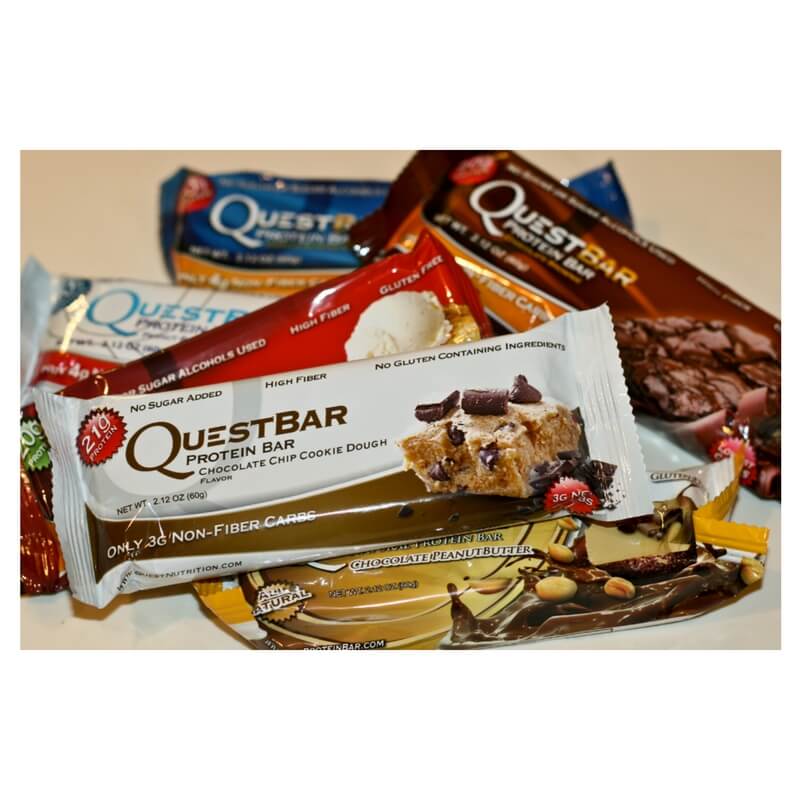
Quest Bars are an example of one of the many PCOS friendly protein bars
Nutrition Profile
From a nutritional stand point Quest Bars present the PCOSer with a solid profile. Quest Bars are all about 190 – 200 calories per bar. Therefore, depending upon where someones calorie level is set, I would either recommend a Quest Bar as a meal replacement (in a pinch) or one of their snacks. For women with PCOS who only command a small number of calories, I might suggest splitting the bar into two pieces and consuming as two separate snacks.
Protein
One of the things I like best about Quest Bars is they are a true protein bar. What I mean by this is they actually have a significant amount of protein in each bar. I know this sounds like a no-brainer when we are talking about protein bars – but you would be surprised how many bars you think are protein bars actually have very little protein in them. In order for me to call a bar a protein bar, it must have at least 15 grams of protein in the entire bar. Anything less than 15 grams is more likely considered a snack bar and not what I would consider a protein bar.
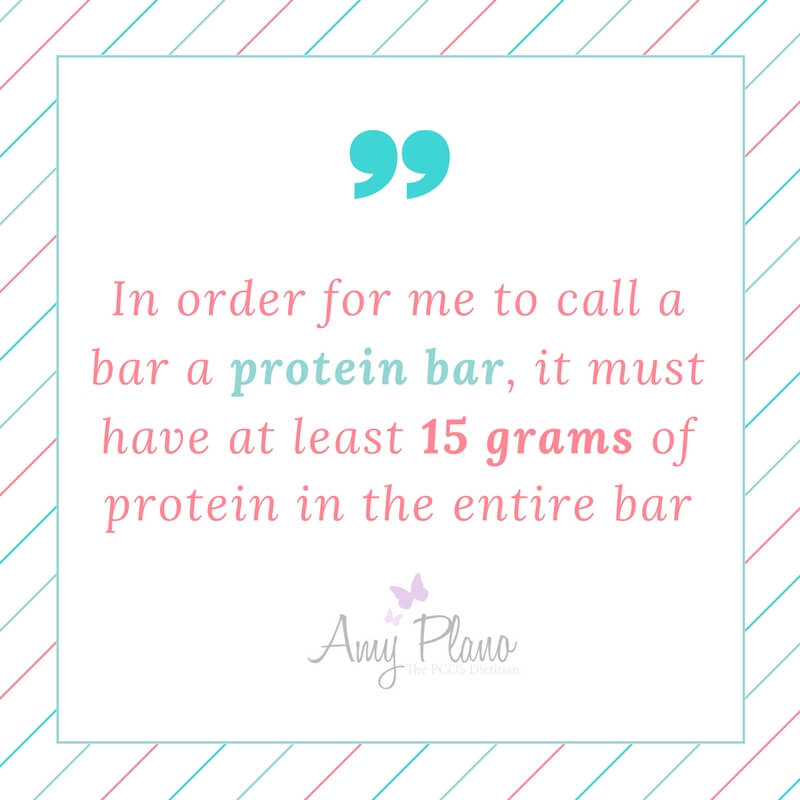
The PCOS dietitian’s rule for determining whether or not a bar is really a protein bar
Of note – we will be examining bars in this weekly series (such as Kind Bars) that do not meet my true protein bar criteria. This does not mean a bar is not a good bar if it does not have 15 grams of protein – it just means we cannot really call it a protein bar. So hang tight and we will get to that in the future! I wanted to start with a true protein bar and that is why I chose Quest Bars.
Quest Bars have a whopping 21 grams of whey protein! For some women that could account for about 1/4 of the protein they need for the day. Protein breaks down slowly and promotes a feeling of fullness. This is why I often recommend Quest Bars for busy women with PCOS who are on the run. Quest Bars make a great high protein breakfast choice! They are a nice alternative to eggs and/or smoothies. Plus they need a lot less time and effort as well. No blender or cooking skills required!
However, be mindful if you are sensitive to dairy or are lactose intolerant you may have a hard time digesting Quest Bars. Due to the fact their main source of protein is whey (which is a derivative of milk!) you may need to consume them with caution if you are sensitive to dairy. Many patients who are lactose intolerant experience cramping, diarrhea and gas when they consume Quest Bars. So just be careful!
Toal Carbohydrates & Fiber Content
You know in the world of PCOS we could never talk about protein bars without talking about their specific carbohydrate content. Not only are Quest Bars high in protein, they are also moderate in carbohydrates. I often consider a food moderate in carbohydrates if has between 15 – 30 grams of carbohydrates per serving. Per bar, Quest has only 21 grams of carbohydrates per serving. On most of my nutrition plans for women with PCOS, I allow for around 100 grams of carbohydrates per day. Therefore, Quest Bars can fit nicely as quick meal or snack option in my eating programs.
Fiber
As you can see in the image of nutrition facts below, Quest Bars contain a high amount fiber. They have 14 grams of fiber per bar which is about 60 % of your daily needs. Fiber is a type of carbohydrate the body cannot breakdown. Therefore, it goes out the same way it comes in! TMI!
Almost all the carbohydrates in Quest Bars come from fiber. Fiber helps you stay full and keeps your insulin levels low. Fiber can also prevent certain diseases, control hunger, and improve digestive health. IMO is the specific type of fiber Quest Bars contain. IMO comes from plant sources. It is similar to chicory root fiber, having the same texture, feel, and taste. It is also helpful for weight loss.
Be Careful if you have any GI Issues
However, with that being said (especially folks with stomach and intestinal issues – such as Crohn’s Disease, Colitis & Irritable Bowel Syndrome) some people have a hard time digesting the large amount of fiber in Quest Bars. So in addition to feeling full, they may also experience significant bloating and gas. If you are one of these people, I would HIGHLY suggest starting off consuming only small portions of the Quest Bar – maybe only a quarter of a bar at a time. While the fiber will do no long term damage, I would hate you to be gassy and bloated – as there is nothing fun about that!

Quest Protein Bar Nutrition Facts
Ingredients
Artificial Sweeteners
Most Quest Bars contain sucralose, an artificial sweetener, erythritol, a sugar alcohol, and stevia, a sweetener and sugar substitute extracted from the leaves of the plant species Stevia rebaudiana Stevia and sucralose appear in the last of the bars’ ingredients. Sucralose is just a different name for the more commonly known sweetener Splenda. This shows it they appears in small quantities. Splenda appears after other low-sugar sweeteners such as stevia and erythritol.
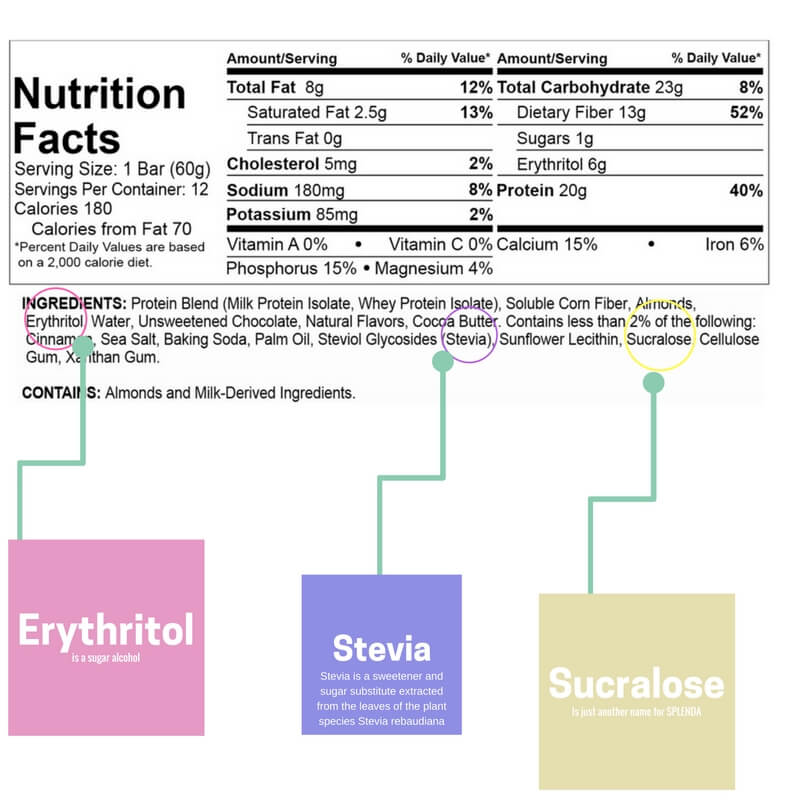
Quest Protein Bars: The Highlighted Ingredients are the Different forms of sweeteners this particular bar contains
However, there are actually 7 Quest bars that don’t contain artificial sweeteners. Are they the most natural food in the world? Not at all, but you have to pick your battles sometimes. If you do choose to eat a Quest bar, you might want to choose carefully based on the type of sweeteners they contain.
Quest Bars without artificial sweeteners:
Cinnamon Roll
Strawberry Cheesecake
Double Chocolate Chunk
Lemon Cream Pie
Chocolate Peanut Butter
Many people ask me my stance on artificial sweeteners. In all honesty, I really have no stance. I truly feel like whether you choose to consume artificial sweeteners is a personal preference. For me personally, the research on the dangers of them is just not convincing enough.
On the flip side, that does not mean I am advocating you consume a boat-load of any type of sweetener! However, like everything I firmly believe if consuming a Quest Protein Bar is the worst of your dietary ills then you my cysta’ are in good shape. In future blogs I will dive into some of the research surrounding artificial sweeteners – but for you now all I can say is eat REAL food when you can.
Gluten Free
Quest Bars are gluten-free. However, with that being said, be careful (as I just noted!) if you do have any GI issues due to the high fiber content of these bars.
Dairy
Quest Protein Bars do contain dairy. But as we will discuss they have a form of dairy that is almost virtually lactose free. Boom!
If you view the label you will see the first ingredient states “Protein Blend: Milk Protein Isolate, Whey Protein Isolate.” The milk protein isolate is a no brainer – obviously it is made from milk and a dairy derivative. What may not be so obvious is the ingredient: ‘whey protein isolate.’
Whey is one of the two major components of milk. It is the liquid part of the milk that separates from the curds (the other major part), during the process of making cheese. However, what we want to zone in on is the type of whey contained in Quest Bars. Quest Bars contain whey isolate. Whey isolates contain a higher percentage of pure protein and can be pure enough to be almost lactose free, carbohydrate free, fat-free, and cholesterol free. So even if you are lactose intolerant, Quest Bars may still be an okay option for you as they tend to contain low amounts of this lactose.
Cost
Quest Bars are pretty comparable to all protein bars on the market. They are available from every where from Trader Joes, to Whole Foods, to Vitamin Shoppe, Amazon (obviously!) and even gas stations such as Mobile and 7-Eleven. They tend to be the least expensive when bought in bulk on Amazon where you can buy a box of 12 for $23.79 which comes down to about $2.00 per bar. I have seen them in 7-Eleven for anywhere between $2.25 to $3.00 per bar. The Trader Joes near me in Orange, CT sells them for around $2.39. If you find a flavor you love — Amazon is always your best option.
Taste
I have tried almost all flavors of the Quest Bars. You can order a variety pack on Amazon if you are interested in sampling different types from fruity ones (think Apple Pie & Lemon) to chocolatey ones (Mint Chocolate Chip, Chocolate Chip). The flavor choices are seemingly endless.
Favorites
However, my personal favs are: Chocolate Chip Cookie Dough and Cookies and Cream. I would have to say I like the Cookies and Cream the best as it reminds slightly of eating Oreo Cookies 🙂 I recently tried the Oatmeal Raisin Chocolate Chip thinking that it would taste like an oatmeal raisin cookie – but I was sadly disappointed. Many people who I work with also love the S’mores flavor but I have to say it just does not do it for me.
Duds
The flavors I like least are the fruity ones such as Apple Pie, Lemon and Mixed Berry. They tend to taste very artificial to me – more so than the chocolate based-bars. I don’t think I could ever finish a whole ‘fruit – based’ bar. It would probably make me sick to my stomach.
Texture
The texture of these bars is dense and chewy. They remind me a bit of the original Power Bars that first came out in the late ’90s. I cannot say I would ever describe them as ‘light’ such as I might a Power Crunch bar. There is very little ‘crunch’ appeal to them at all. I think this is due to the high fiber content. It is tough to make something appear light when you have put 50 % of someone’s daily fiber requirement into one little dinky little protein bar.
After Taste?
Most of the Quest Bars have a somewhat distinct after-taste. Even the ones sweetened with Stevia. It is not horrific by any means. But I would be lying to you if I said they tasted amazing. However, with that being said – they taste better than most of the other bars on the market. But that may not be saying much!
The PCOS Dietitian’s Verdict – Quest Protein Bars
Hmmm … this is a tough one. I think Quest Bars are like many foods; they look good on paper, but can they stand up tall among all the categories ?
In terms of a nutritional profile, I would give Quest Bars an A/A-. They are solid. They are low enough in carbohydrates (~ 20 grams), high enough protein (20 grams, too!) and wicked high in fiber (13 grams) to fit into the class of being PCOS friendly for sure.
The ingredients I would consider somewhat iffy. While there are not a ton of ingredients and fillers like most bars – they still have artificial sweeteners (typically in the form of Splenda) and Palm Oil which is a highly refined saturated fat. For ingredients I would give Quest Bars a C+/B-. I wish they would get rid of the Splenda or at least show more directly that surcralose is really Splenda in disguise.
Cost they get a solid B. They are comparable with all the other protein bars on the market. You have to keep in my mind they have 20 grams of protein in most bars which is the equal to 3 ounce of chicken. So if you look at them that way – they are a good value when it comes to getting your protein in. Especially if you don’t love animal protein.
Taste the get a B They are not the most horrific tasting bar on the market – but they are certainly not something I would choose to eat all day. I think given the fact they have so much fiber and contain artificial sweeteners it would be virtually impossible for them to taste amazing given their nutritional make-up.
So all in all – I would probably rate Quest Bars overall a solid B. Relative to other bars – they will likely score higher – but still not A material.
As with any bars no matter what the brand – I would always encourage real food over supplements when possible. However, I am a realist and understand we all live in a busy, fast-paced world where sometimes food prep is non-existent. Quest Bars can certainly ‘pinch hit’ for a breakfast, lunch or snack. But do your best to round out the rest of your diet with clean sources of protein such as eggs, chicken, greek yogurt, cottage cheese, lean red meat and turkey.
What’s your take on Quest Bars? Love ’em? Hate em’? Have a favorite flavor you are dying to share with our community? Tell us in the comments below.
And as always thanks for stopping by!


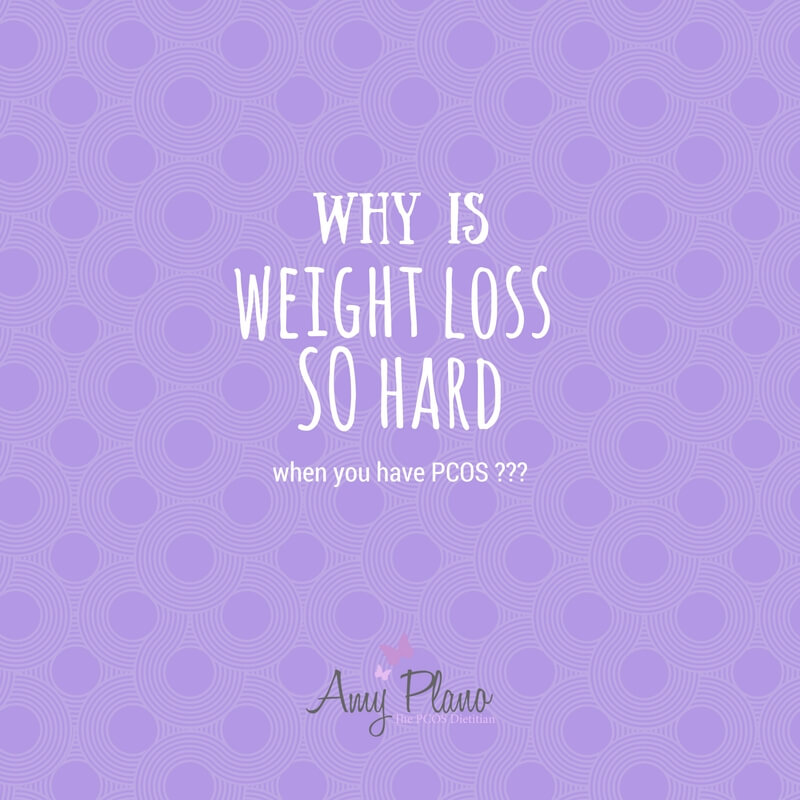
by AmyPlano | Sep 1, 2016 | PCOS and Weight Gain, PCOS Medications, Weight Loss
Why Is Weight Loss SO hard when you have PCOS?
Did you know that weight loss can help with improving almost all the symptoms of PCOS? Even a modest weight loss of 5 – 10 % of a woman’s initial weight can lead to improvements in insulin sensitivity, ovulation and fertility! But, I know this is easier said than done. Weight gain and weight loss are two of the most common issues women with PCOS are forced to deal with.
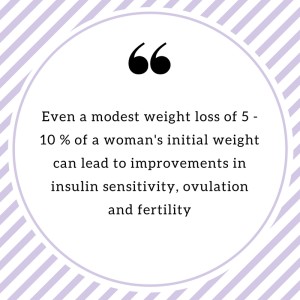
But, what gives ? Why is weight loss so hard if you have PCOS? Well my dietetic intern Jackie Budlowski and I are here to lay the smack down and give the 411 of why the heck it so friggin’ challenging to lose weight when you have PCOS. Get your notebook out — these are some golden nuggets of information 🙂
Insulin
I truly believe insulin is one of the most important hormones in controlling weight! Your pancreas secretes insulin to regulate your blood glucose levels. In most individuals, insulin helps lower one’s blood glucose levels by shuttling glucose into the cells where it can be used for energy. However, most women with PCOS do not effectively process glucose. They experience what is called insulin resistance.Their bodies are less sensitive to the effects of insulin. In response, the pancreas dumps out even more insulin, leading to high insulin levels, or what is known as hyperinsulinemia.
High levels of insulin signal to the body that energy is abundant. In turn, rather than use the extra energy as fuel, women with PCOS store excess glucose as fat. Therefore, one of the biggest keys to controlling weight is to regulate blood sugar and control insulin levels. This is best accomplished through a moderate carbohydrate diet supplemented with the insulin sensitizing agent metformin.
If you are not already familiar with the benefits of metformin please read my previous blog post which will bring you up to speed.
Slow Metabolism
Women with PCOS have been shown to have a slower metabolic rate. This is based on many factors but the primary one being the amount of body fat women with PCOS tend to carry. Your metabolic rate is the number of calories you need for your body and organs to work. You see, body fat is what I consider metabolically “dead.” It does nothing for you but kind of just hang there.
Muscle on the other hand is very thermogenic. It burns more calories than fat does – even while at rest. In fact, muscle tissue is about 8 times more metabolically demanding than fat. A higher percentage of lean body weight (muscles) results in a higher metabolism compared to people of the same weight with a lower percentage.
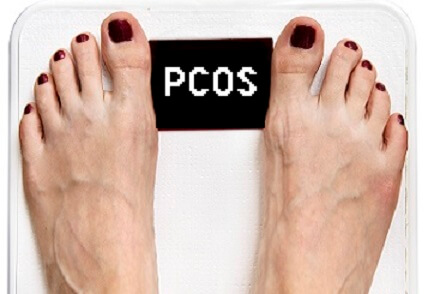
If you have a slower metabolic rate, this means you must consume fewer calories than the average woman. Eating more calories than you burn can lead to weight gain. In future blog posts we will discuss some of the different ways to improve your metabolic rate (Hint – Hint : strength training is definitely one of them!)
If you are curious what your metabolic rate is and you live in the Connecticut area shoot us an email at amy.plano@yahoo.com. We can set up a time to test your metabolism. We have a device called the Bodygem which tests your metabolism by using a simple breathing device. The Bodygem is the “gold standard” of metabolism testing devices. Don’t believe us ? Click here bodygem validation to review the research. The cost of the test is $150.00. You must be fasted, with no caffeine or exercise for 4 hours before the test.
Appetite Hormones
There are a number of hormones involved with hunger and appetite control. Ones of particular interest for women with PCOS are leptin, cholecystokinin (CCK) and insulin. These hormones are responsible for signaling to the body to tell it that is it full and to “stop eating.” Research has shown that women with PCOS have altered hormone signals, which may lead you to feel constantly hungry even when you are consuming enough calories. This leads to overeating, increases in body fat and overall lower esteem. Not a winning combination for weight loss.
Leptin
Did you know that your fat cells produce hormones? This is one reason women who carry a significant amount of body fat often have hormonal problems. One of the hormones produced by your fat cells is leptin. This hormone sends a signal to the hypothalamus gland in your brain when fat cells are full. Due to the fact that cells produce leptin in proportion to their size, overweight women with PCOS also have very high levels of leptin.
Given the way leptin is supposed to work, women who are overweight and have PCOS should have a diminished appetite. But we know this is not the case. You can have a lot of fat making a lot of leptin, but it doesn’t turn the hunger valve off. The brain isn’t listening. No drop in appetite. In fact, your brain might even think you’re starving. This because as far as it’s concerned, there’s not enough leptin! So you get even hungrier. This condition is known as leptin resistance. This causes an up regulation of appetite. This supports why women with PCOS tend to constantly be hungry despite taking in an ideal amount of calories.
Cholecystokinin (Alias: CCK)
Therefore, it may come at no surprise that women with PCOS often feel less satisfied after a meal than women without PCOS. This can be attributed to the hormone cholecystokinin (CCK). CCK is responsible for telling your body you are full after a meal. Women with PCOS are reported to secrete less CCK in response to a meal. So, if your CCK levels are lower, this means you will be hungrier after meals despite just eating. It has also been speculated that impaired CCK secretion may play a role in the greater frequency of binge eating in women with PCOS.
Not so awesome, right ? But the plot thickens …
Insulin
Lastly, insulin also acts as an appetite stimulating hormone. You may already be familiar with the concept of insulin resistance and PCOS. If you are not click here to brush up on your knowledInsulin resistance occurs when there is a lot of insulin being produced (such as, with many women who have PCOS), but the body and brain have stopped “listening” to insulin’s effects. The scenario becomes : you eat, your body releases insulin, but your body still tells you to eat more. So you eat more and increase the likelihood of storing the food you do eat as excess body fat. And if this is not bad enough – you rarely feel satisfied.Therefore, high levels of insulin may be one of the many reasons why you may experience more hunger than other people. Higher hunger levels inevitably leads to more eating which results in weight gain.
Just because it is harder to lose weight, doesn’t mean it is impossible. Here are some tips on how to take the bull-by-the-horns and make your hunger hormones work for you!
Weight loss & PCOS: How to manipulate your hunger hormones for weight loss
Pump up the protein
Do your best to have protein at all meals, but especially at breakfast. Breakfast sets the “appetite tone” for the day! Therefore, consuming high-quality protein sources such as eggs, Greek yogurt or cottage cheese with some nuts will help reduce your hunger hormones and keep your appetite at an even keel throughout the day.
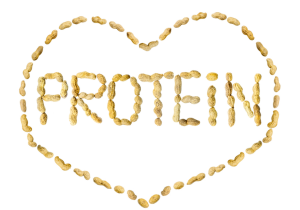
Skip the processed carbs (duh!)
Stay away from refined-carbohydrate-only meals and snacks such as cereal, a bowl of pasta, crackers, chips and starchy snacks. Even having a healthy snack such as fruit alone can trigger a spike and an immediate drop in insulin, so add some nuts, a piece of cheese or Greek yogurt to your fruit.
Focus on high fiber foods
Fiber is deeply tied to satiety. High volume, low-calorie, nutrient dense foods delay gastric emptying keeping food in the stomach for a longer period. Therefore, do your best to include foods such a vegetables, high fiber cereals, fruit and legumes to keep hunger at bay. The goal is aim for 25-30 grams of fiber spread throughout the day.
Eat a diet rich in omega-3 fatty acids to boost leptin
People who are overweight tend to release too much of a group of molecules that the body uses to combat inflammation. These molecules reduce leptin’s ability to communicate with the brain. They are thought to be one of the underlying causes of leptin resistance. Omega-3 fatty acids decrease the production of these molecules by reducing inflammation in the body. The body does not produce omega-3 fatty acid therefore you must get from the diet.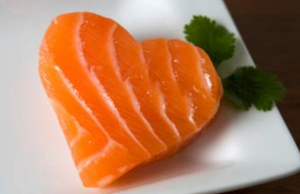 Foods high in omega-3 fatty acids include grass-fed meats, walnuts the fattier fish salmon, anchovies, sardines, mackerel, trout as well as chia seeds, flax seeds, summer squash and kale. Aim for about 800 – 1000 mg per day.
Foods high in omega-3 fatty acids include grass-fed meats, walnuts the fattier fish salmon, anchovies, sardines, mackerel, trout as well as chia seeds, flax seeds, summer squash and kale. Aim for about 800 – 1000 mg per day.
While the hormones that effect and control your hunger might be seen as complex, the three I’ve just discussed are keys to to unravelling this complicated web of PCOS, hunger and weight gain. As you can see, there are many factors at play, beyond just your determination to eat properly. These are factors I want you think about when you become frustrated with your PCOS and weight gain.What is important to understand is that your behavior around eating is not always something you can always consciously regulate.
Be confident and believe in yourself. Weight loss may initially be a struggle, but with the proper approach I am confident you can do it!



